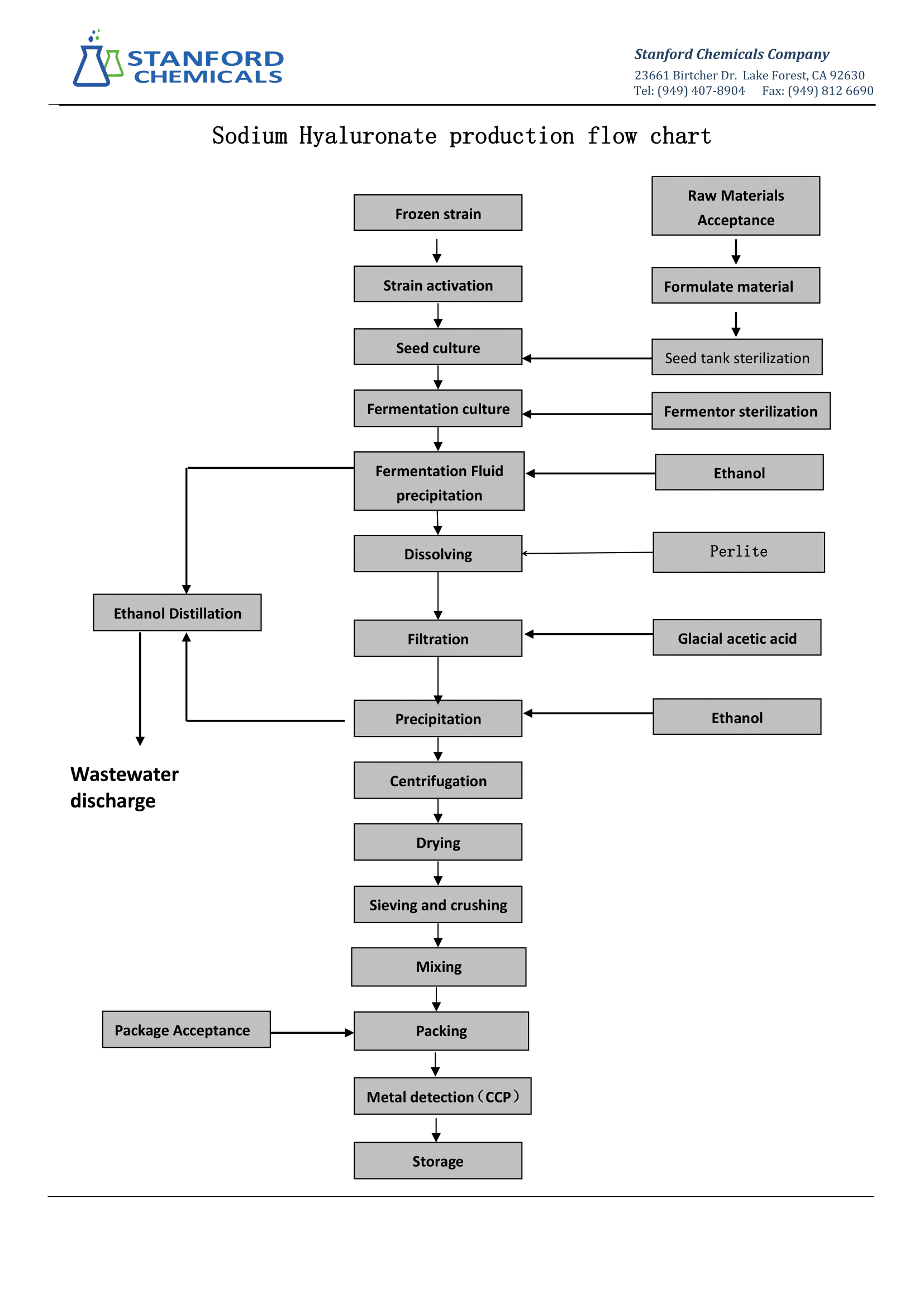How is Hyaluronic Acid Powder Made
We’ve discussed the many benefits and applications of hyaluronic acid (HA, Hyaluronan), but do you know how it’s made? What production processes are used for the hyaluronic acid found in cosmetics, medical products, and injections? In this article, we’ll explain the two main production methods for sodium hyaluronate and compare the differences between them.
Understanding the Two Methods: Animal Extraction and Bacterial Fermentation
On the market, the production methods for hyaluronic acid can be divided into two categories: animal extraction and bacterial fermentation.
–Animal Extraction
As the name suggests, the animal extraction method involves extracting hyaluronic acid from animal tissues. Common sources include rooster combs, bovine vitreous humor, and fish skin, which are rich in natural hyaluronic acid.
Process:
- Processing and grinding the animal tissue.
- Extracting the hyaluronan through chemical treatment or enzymatic hydrolysis.
- Purifying the hyaluronic acid using methods like precipitation, centrifugation, and filtration.
- Drying and powdering the purified hyaluronic acid.
–Bacterial Fermentation
This method uses certain microorganisms to secrete a capsule during growth, and the main component of that capsule is hyaluronic acid. The fermentation process involves feeding the microorganisms nutrients like sugars and amino acids. Common bacteria used are streptococci and lactic acid bacteria.
Process:
- Selecting suitable strains of bacteria (e.g., streptococci).
- Cultivating the bacteria in fermentation tanks, where they produce hyaluronic acid.
- After fermentation, the mixture is filtered, precipitated, and ultra-filtered.
- The hyaluronic acid is then purified and dried into powder form.
Fig 1. Sodium Hyaluronate Powder
Comparing the Two Methods: Animal Extraction vs. Bacterial Fermentation
When comparing two processes, we cannot avoid the issues of raw materials, processes, costs, product quality, safety, etc. We will also compare these aspects.
1. Raw Materials
Animal extraction relies on material supplied by animals, and its resources are limited besides raising ethical issues. On the contrary, bacterial fermentation deals with renewable plant-based or synthetic nutrients in a controlled process, hence sustainable.
2. Process Characteristics:
Animal extraction involves the manipulation of biological materials that require high chemical usage. The extraction efficiency is low. Fermentation of bacteria is fully automated and controllable; optimized conditions raise the yield of production.
3. Cost
The extraction from animals is more expensive because the used animal tissues are not very much available, and there is a huge usage of chemicals involved. Handling animal tissues involves more labor and equipment costs due to their complexity.
Bacterial fermentation, on the one hand, is less expensive and suitable for large-scale production; to further reduce costs, the fermentation can be carried out on a batch or continuous basis, with raw materials required like sugars and water being low in price.
4. Product Quality and Safety:
Animal extraction uses animal tissues. The possibility, therefore, exists for contamination by the likes of pathogens like bacteria, viruses, or prions, and allergens. Strict safety testing is thus mandatory for all medical and cosmetic applications.
Hyaluronan produced by bacterial fermentation, on the other hand, has higher purity. By mimicking the optimum fermentation conditions with great care, and purifying it further, the risk of contamination can be reduced much further, thus being safer. This methodology produces hyaluronic acid-free of all animal components, appropriate for vegetarians and those forbearing animal products.
5. Control of Molecular Weight
The procedure for the extraction of hyaluronic acid from animals does complicate the complete control over molecular weight, which is usually higher. This, in turn, makes it more applicable for products that require high viscosity, such as lubricants or mucosal protectors.
Due to bacterial fermentation, better control of molecular weight through adjustments in the steps of fermentation and processing is possible. This flexibility enables various molecular weights for hyaluronic acid to be produced, allowing different applications.
Conclusion
- Animal Extraction: The extraction process is complex, with high costs, low yields, and inconsistent quality. It also poses a risk of contamination from animal sources, making it more suited for small-scale, high-end medical or specialized applications.
- Bacterial Fermentation: This method offers high production efficiency, lower costs, and high product purity. It allows for better control over molecular weight and is ideal for large-scale industrial production. As a result, it is the primary method used for modern hyaluronic acid production.
Frequently Asked Questions (FAQ)
1. What are the common uses of Hyaluronan?
Hyaluronan powder is commonly used in cosmetics for its moisturizing and anti-aging properties, in eye drops to provide lubrication, in joint injections to relieve arthritis pain, and as a food additive to enhance texture and moisture.
2. What is the minimum order quantity for hyaluronic acid powder bulk?
SCC offers hyaluronic acid powder in various quantities to meet different customer needs. Whether you’re looking to purchase small bottles or require hyaluronic acid powder in bulk, such as large containers suitable for industrial use, we can accommodate your order.
3. Is Hyaluronan powder safe for use in skincare products?
Yes, Hyaluronan powder is safe for use in skincare products when used as directed. It is a naturally occurring substance in the human body and is well-tolerated by most skin types.
4. How should Hyaluronan powder be stored to maintain its effectiveness?
To preserve the quality and effectiveness of Hyaluronan powder, it should be stored in a cool, dry place away from direct sunlight and moisture. Ideally, keep the powder in its original airtight container and tightly sealed when not in use.
Stanford Chemicals Company (SCC) is a professional supplier of hyaluronic acid. SCC offers high-purity, high-quality, and safe sodium hyaluronate powder (including food-grade, cosmetic-grade, medical-grade, and injectable-grade). All of SCC’s hyaluronic acid products are made using the bacterial fermentation method, ensuring safety and reliability.
The following figure shows the production process of sodium hyaluronate powder:


